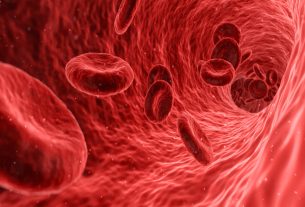Vasovagal syncope, commonly known as fainting or a vasovagal episode, is one of the most frequent causes of temporary loss of consciousness. It occurs due to a sudden drop in blood flow to the brain, typically triggered by an abnormal reflex of the autonomic nervous system.
What Is Syncope?
Syncope is a temporary, sudden, and reversible loss of consciousness caused by a brief reduction in blood flow to the brain. This episode usually lasts only a few seconds or minutes. Often, people experience warning signs such as dizziness, blurred vision, or a feeling of weakness before losing consciousness. The affected person may collapse quickly, although fainting may be avoided if they manage to lie down in time or are assisted.
What Is Vasovagal Syncope?
Among the different types of syncope, vasovagal syncope is the most common and is typically benign. It is not caused by a heart or brain condition, but rather by an exaggerated vagal reflex—also known as a neurocardiogenic reflex. This reflex can lead to bradycardia (slowing of the heart rate) and/or vasodilation (a drop in blood pressure), which reduces cerebral blood flow and causes fainting.
Vasovagal syncope affects up to 20% of the population at some point in life, and about 35% of those affected may experience it more than once.
Causes of Vasovagal Syncope
This type of syncope is usually triggered by mild or emotional stimuli. Common causes include:
- Seeing blood or needles
- Intense or sudden pain
- Strong emotional stress, such as fear or anxiety
- Standing for long periods
- Hot or poorly ventilated environments
- Unpleasant smells
- Severe fatigue or sleep deprivation
In some cases, the fainting episode may occur without any obvious trigger, known as atypical vasovagal syncope.
Interestingly, some individuals experience fainting after a stressful situation has ended, during a moment of relaxation. This happens because the vagal reflex may be delayed, activating minutes after the trigger has passed.
Symptoms of Vasovagal Syncope
Warning signs before fainting often include:
- Lightheadedness or dizziness
- Nausea
- Cold sweating
- Pale skin
- Blurred or tunnel vision
- Feeling hot or weak
If no preventive action is taken, these symptoms may lead to a brief loss of consciousness. Fortunately, recovery is usually spontaneous and complete.
Treatment and Prevention of Vasovagal Syncope
Treatment is usually non-pharmacological and focuses on preventive measures and patient education. Key recommendations include:
- Avoiding known triggers when possible
- Recognizing early warning signs and lying down promptly
- Staying well hydrated
- Performing isometric counter-pressure maneuvers (e.g., leg crossing or tensing muscles) at the onset of symptoms
- Seeking medical advice in cases of frequent or unexplained episodes
When to See a Doctor
Although vasovagal syncope is usually harmless, it’s important to consult a healthcare provider if:
- Episodes are frequent or severe
- Fainting occurs without warning signs
- Syncope happens during physical exertion
- There is a family history of sudden cardiac death or heart conditions
🔎Conclusion: Vasovagal syncope is a common and benign cause of fainting, triggered by a natural reflex that reduces blood flow to the brain. Although it can be alarming, it is usually preventable and manageable with simple lifestyle adjustments. If episodes are recurrent or atypical, a thorough medical evaluation is recommended.
Medical Reference: Neurocardiogenic syncope



